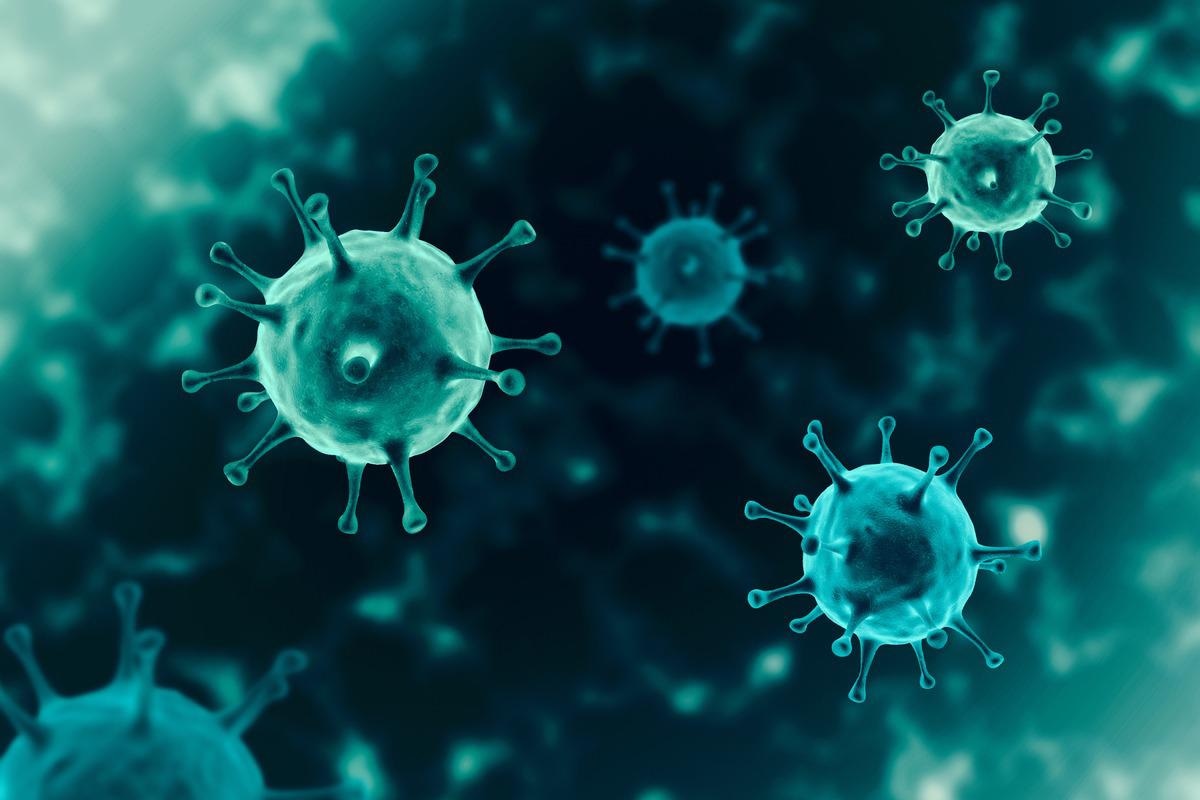Severe Acute Respiratory Syndrome Coronavirus 2 (SARS-CoV-2) belongs to the Coronaviridae family. These viruses contain a single non-segmented, single-stranded ribonucleic acid (ssRNA) genome of vertebrates.
The RNA virus can be detected through real-time polymerase chain reaction (RT-PCR) techniques; a major drawback of this technique is the longer time required for detection.
 Study: Smart and emerging nanomaterials-based biosensor for SARS-CoV-2 detection. Image Credit: Nhemz/Shutterstock
Study: Smart and emerging nanomaterials-based biosensor for SARS-CoV-2 detection. Image Credit: Nhemz/Shutterstock
Recently, many aspects of the RT-PCR technique have been modified to make it highly specific towards the SARS-CoV-2 virus—by determining its specific targets. Nevertheless, there lies an immediate necessity for new, rapid and economical methods for the detection of SARS-CoV-2.
Biosensors have added advantages for identifying RNA-viruses by utilizing aptamer-conjugated nanoparticles, Au-Ag-based nanoparticles, CRISPR-Cas9 based paper strip and surface plasmon resonance electrochemical biosensors and shows promise in serving as a portable tool for diagnosing SARS-CoV-2.
A new review published in the Materials Letters aimed to highlight the different smart and emerging nanomaterials used to detect SARS-CoV-2.
The present article also discussed current diagnostic strategies, biomarkers and future perspectives of smart and emerging nanomaterials for the fabrication of biosensors.
Background
Previous data suggest that enormous biomarkers can be used for SARS-CoV-2 detection. Numerous biomarkers of various viruses – like middle east respiratory syndrome (MERS) and influenza virus, harbor special primers and may be fully expressed by RT-PCR assays. These have high sensitivity towards SARS-CoV-2 detection.
The four structural proteins, namely – matrix (M), spike (S), nucleocapsid (N) and envelope (E), are used as antigens in the diagnosis of SARS-CoV-2. Tests for specific antibodies are also useful in the detection of SARS-CoV-2. These antibodies develop naturally from the adaptive immune response of infected patients through the process known as active immunity. Antibodies bind to the S protein and neutralize the infectious capacity of the virus and also prohibit disease progression through impeding the viral interaction with the angiotensin-converting enzyme 2 (ACE2) receptors.
Antibodies may also develop against the spike proteins – this process is known as “passive immunity.” S proteins enzyme-linked immunosorbent assay (ELISA) can be used to measure the antibodies against SARS-CoV-2.
Biosensors can serve as alternative tools for biomarker detection of antibodies against SARS-CoV-2, as they offer high accuracy, rapid response, enhanced sensitivity, portability and selectivity. Furthermore, these methods are less technique-sensitive and provide knowledge regarding the infection's critical trends and severity.
Latest nanomaterial developments
Latest smart nanomaterials that are in use for biosensing applications of SARS-CoV-2 infection are – metal oxides, carbon-based nanomaterials, transition metal dichalcogenide, quantum dots, polymer-based nanocomposites, among others. Unique properties of these nanomaterials and their composites for biosensors fabrication are – small size, signal generation, quenching and signal amplification.
Among the metal nanoparticles, the biosensing of virus infections is majorly done by gold nanoparticles. The advantages include – biocompatibility, enhanced loading capacity of bio-analyte and electrocatalytic properties. Gold nanoparticles could detect the antigen within 30 mins from human samples, and the obtained results were in complete agreement with WHO guidelines. Further, when polystyrene nanoparticles doped with lanthanide were used to detect the anti-SARS-CoV-2 IgG in human serum, the obtained results were comparable to those of the RT-PCR technique.
Graphene is an excellent nanomaterial; a field-effect transistor (FET)-based biosensor was fabricated using a coating of graphene sheet, for detecting specific antibodies. Meanwhile, field-effect Au-decorated graphene nanosensors were also developed to quickly identify the SARS-CoV-2 virus. In addition, an immunosensor was developed using the combination of graphene-FET with antigen-antibody interaction for real-time detection of the SARS-CoV-2 spike protein. Graphene and its derivatives, owing to their high conductivity and good biocompatibility, are deemed essential candidates for advanced biosensing applications for point of care tests (POCT).
Carbon nanotubes (CNTs) – made from graphene sheets, show outstanding mechanical, electronic and thermal properties. These were used for developing a rapid identification system using a near-infrared mechanism. Inactivation of the virus was also tried through inhibition surfaces with single-walled CNTs decorated with metals for adsorption of H2O2. CNTs overcome drawbacks of graphene-based sensors, such as carrier migration.
Transition metal dichalcogenides (TMDCs) are emerging as excellent materials for biosensing. They possess optical, electronic, mechanical and magnetic properties and render large bandgaps and better signal strength. Among these, molybdenum disulfide (MoS2) offers a fast electron transfer rate, superior conductivity and feasibility, along with biocompatibility and stability.
Quantum dots are tiny semiconductor nanocrystals that can convert light spectrum into various colors. They show excellent fluorescence, quantum confinement and tunable band energy. These have proven to be novel fluorescent probes for molecular imaging. Additionally, carbon-based quantum dots have been identified as an efficient virus-inactivation agent. Besides, graphitic carbon nitride-cadmium sulfide quantum dot nanocomposites could determine SARS-CoV-2 receptor-binding domain (RBD). Furthermore, they can be used to label the virus's envelope, while novel fluorescent-based quantum dots may aid in developing advanced diagnostic methods.
Molecularly imprinted polymers (MIPs) have been used to detect multiple viruses. They are promising as future sensor technology, as these could be cost-effective, environmental-friendly, rapid, sensitive, selective and specific.
Screen-printed electrodes (SPE) are easily modified with nanomaterials and confer better electroanalytical performances and sensitivity. Screen-printed graphene electrodes (SPGE) show superior electrochemical properties to other electrode-based materials.
Conclusion
In summary, smart and emerging nano-based materials have become essential components of biomedical sciences. Nanomaterials offer adsorption, high surface area and high reactivity and serve as excellent biosensors. Biosensors can serve as powerful analytical tools that can provide a detailed understanding of critical trends and conditions severity of SARS-CoV-2 and can help in early and rapid diagnosis of the infection.